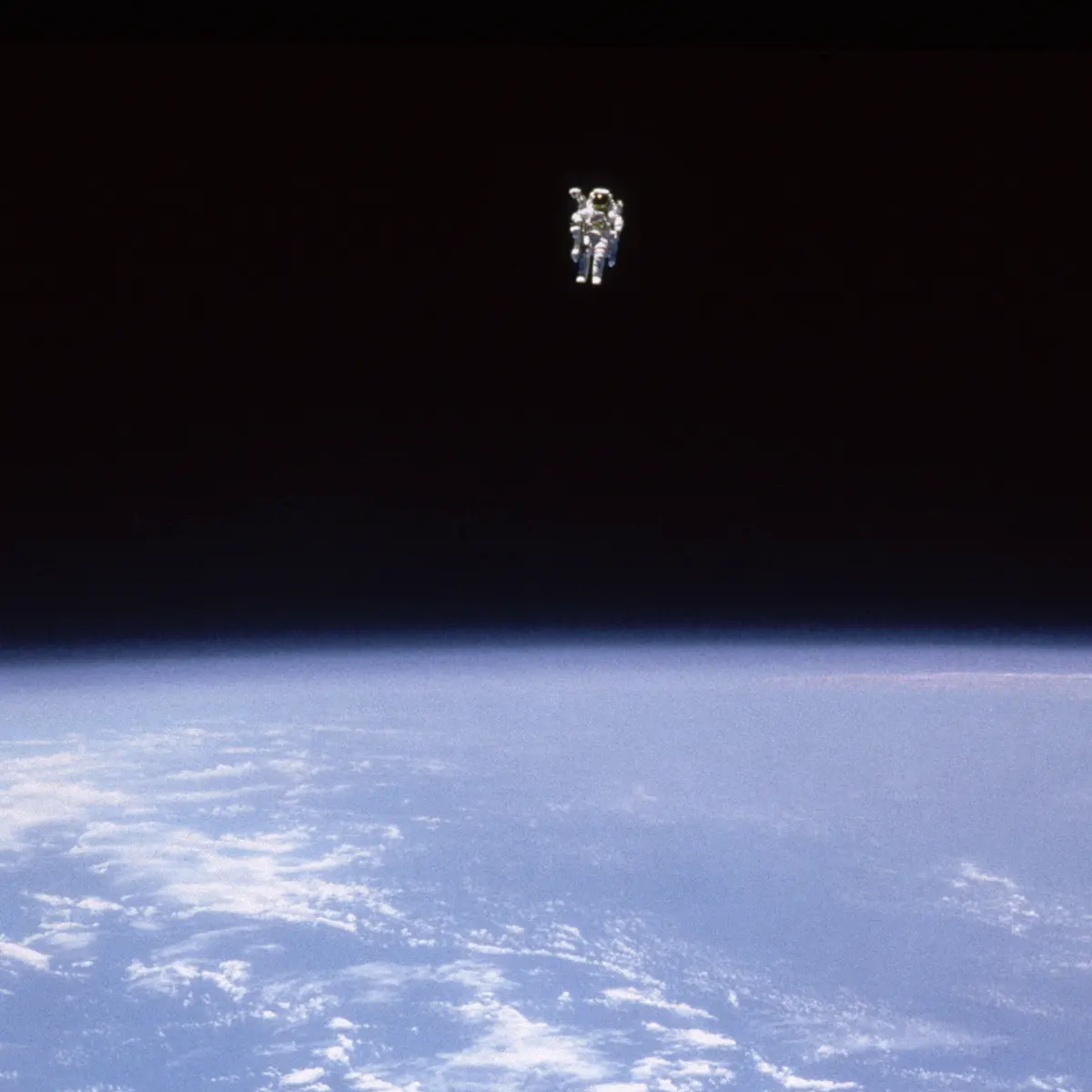There are a lot of terrifying things you can find in space, from mysterious massive voids 250 to 330 million light-years across, to tiny droplets of water in your space suit which could very easily drown you. But the moniker of the “most terrifying space photo” is generally given to a photo of astronaut Bruce McCandless II, taken from the space shuttle Challenger on February 7, 1984.
On that day, and again on February 9, he and fellow astronaut Bob Stewart strapped themselves into Manned Maneuvering Units (MMUs) and left the comfort of their ship to make an untethered space walk as they and Challenger hurtled along at nearly 28,900 kilometers per hour (18,000 miles per hour).
Bruce was the first to make the leap, becoming the first human in history to make an untethered spacewalk.

Don’t look down.
Image credit: NASA.
There’s video, too.
Though both astronauts had trained hard for this moment, it was a little hairy for those watching from the ground below.
“My wife was at mission control, and there was quite a bit of apprehension,” McCandless recalled in a piece for the Guardian in 2015. “I wanted to say something similar to Neil [Armstrong] when he landed on the moon, so I said, ‘It may have been a small step for Neil, but it’s a heck of a big leap for me.’ That loosened the tension a bit.”
Of course, hurtling along at 28,900 kilometers per hour (18,000 miles per hour) sounds terrifying, but it didn’t feel like those speeds to the astronauts. Relative to Challenger, the MMU boosted the astronauts along at gentler speeds, using nitrogen for thrust.
“It was supposed to be an early-day Buck Rogers flying belt, if you know what I mean, except it didn’t have the person zooming … real fast,” astronaut Vance D. Brand explained on NASA‘s website. “It was a huge device on your back that was very well designed [and] redundant so that it was very safe, but [it] move[d] along at about one to two or three miles per hour. It used cold nitrogen gas coming out in spurts to thrust you around and everything.”
Though a terrifying image to people who like to be firmly attached to the Earth, or at least tethered to a spacecraft protecting you from dying in space, for the first human to fly untethered, the main feeling was one of professional accomplishment.
“I don’t like those overused lines ‘slipped the surly bonds of Earth;, but when I was free from the shuttle, they felt accurate,” McCandless wrote in the Guardian. “It was a wonderful feeling, a mix of personal elation and professional pride: it had taken many years to get to that point.”
Source Link: The Story Behind The "Most Terrifying Photo" Ever Taken In Space